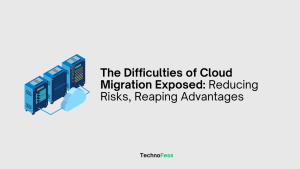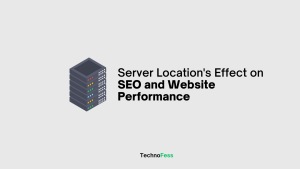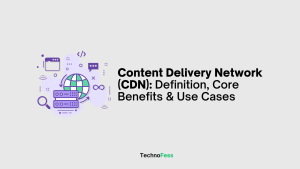One of the main concerns for operators these days is making sure that data center processes are scalable and energy efficient. Operators are aware that idle servers and other underutilized equipment waste up to 50% of the energy used by data center technology. Their goal of cutting expenses and creating a more sustainable company is what motivates them to work toward reducing energy use and prices.
This piece investigates:
- Operational present state: How much energy global data centers consume, the carbon emissions they emit, and the criteria they use to evaluate energy efficiency.
- Data center energy efficiency strategy: To reduce energy usage, key components include virtualizing systems, adopting energy-aware software designs, optimizing hardware, and incorporating renewable energy.
- Scaling energy-efficient data centers: As data center teams frequently oversee regional or worldwide operations and struggle with increasing rack density as a result of artificial intelligence (AI) and other workloads, scalability is becoming increasingly important.
- Creating scalability: By deploying more capacity as needed and streamlining operations through standardized procedures, teams can leverage modular data centers, edge computing, automation, and artificial intelligence.
- Rising to meet future trends: As global requirements tighten, data center teams are utilizing cutting-edge technologies to maximize energy efficiency now.
This article will assist power, facilities, and data center teams in developing a strategic plan and utilizing a variety of levers to increase sustainability and energy efficiency.
How Data Center Teams Measure Energy Efficiency
The ability of operators to maintain operations while lowering energy usage and minimizing waste determines the energy efficiency of data centers. To assess energy efficiency and compare outcomes across locations, campuses, and rivals, data center operators employ two criteria.
Read also: Find the 2024’s Top Log Management Tools!
Energy efficiency is measured by power usage effectiveness or PUE. By dividing the total electricity entering the facility by the power utilized to run IT equipment, operators can calculate the PUE of a data center. To get as near to 1.0 as feasible, top hyperscalers and colocation companies employ cutting-edge technology and energy management best practices. 1.55 is a more typical score. Operators can also monitor DCiE, or data center infrastructure efficiency, which is PUE’s opposite. Operators divide the power of IT equipment by the overall power of the facility to generate a DCiE score.
Energy-efficient procedures are necessary for large operators to be scalable. They, therefore, make use of energy management systems (EMSs), which offer a window into energy operations and best practices that can be replicated across sites and geographical areas. With EMSs, teams may examine global network performance and drill down to facilities, types of devices, and individual devices. Teams may find possibilities to increase energy efficiency across particular locations, numerous facilities, regions, and more with the use of a variety of data.
What makes energy efficiency in the digital age so important, then? The world runs on technology. Owners are expanding data center capacity all around the world as a result. But these facilities’ lighting and cooling require a lot of energy, which affects the environment. Around the world, several regulatory bodies are creating or enacting new laws to force data centers to increase their energy efficiency. Additionally, because of geopolitical and other changes, energy costs are sometimes variable, which raises the need for operating capital. In order to secure their company’s operations for the future, owners and operators of data centers want to increase their energy efficiency.
The Present Circumstance of Energy Usage in Data Centers
Fossil fuels are being replaced by hybrid energy sources, such as solar, wind, and other renewable energy sources, to power industry operations worldwide. With the exception of bitcoin mining, data centers and transmission networks currently account for 1.0% to 1.5% of total energy use worldwide. In comparison, 37% of all energy utilized worldwide in 2022 came from the industrial sector.
Data centers consumed between 240 and 340 terawatts of energy in 2022. However, because businesses are becoming more interested in generative and discriminative AI, as well as other processing-intensive jobs, energy consumption is skyrocketing. By 2030, data center energy demand is expected to reach 2967 terawatts.
Global data centers are responsible for 1% of greenhouse gas emissions, though the rate of commercial digitization is probably driving up that percentage. Operators need to cut emissions by 50% in order to reach the Net Zero Emissions Scenario by 2050.
Read also: Server Location’s Effect on SEO and Website Performance
A lot of operators are ahead of schedule with their rules. By using techniques like hardware optimization, system virtualization, energy-conscious software design, and increasing the proportion of renewable energy in their energy mix, they are going green with their operations. In order to give worldwide energy operations more accuracy and control, they also aim to build for scalability. Using edge computing to handle important tasks, embracing automation and other cutting-edge technology to improve resource consumption and management techniques, and implementing modular data centers are some strategies.
Although cutting energy use and implementing other sustainability measures would necessitate additional capital expenditures, many operators see these steps as essential to maintaining long-term business operations. Furthermore, emerging approaches like modular data centers and edge computing give data centers more freedom in terms of deploying and utilizing processing capability.
Important Elements of Energy Efficiency in Data Centers
The majority of operators, according to the Uptime Institute, have reduced PUE by raising air supply temperatures, optimizing cooling controls, and adopting hot and cold air confinement in their data centers. They are, therefore, creating more comprehensive plans to raise energy efficiency. Usually, these tactics consist of:
Hardware and Cooling Optimization
Over half of the energy used in data centers is usually used by servers. Consequently, data center operators can drastically cut usage by implementing energy-efficient servers. They can achieve this by swapping out outdated, ineffective servers for the newest models, raising CPU usage from low levels, handling heavier workloads, and enhancing power management. According to research by the Uptime Institute, data centers utilizing AMD or Intel technology saw a twofold increase in energy efficiency when they advanced two server generations.
Numerous data center teams have maximized the potential of air cooling systems. In order to cool hot-running equipment used for artificial intelligence (AI) and other processing-intensive tasks that can’t be effectively cooled by air alone, they are, therefore, increasingly looking at hybrid air-liquid cooling solutions. Air is up to 50–1,000 times less effective at cooling equipment than liquids like water. Teams carefully analyze use cases, including workload processing requirements, white space availability, existing infrastructure, and budget, before making cooling system options because liquid cooling is more expensive and complex.
Using Virtualization and Energy-Conscious Software Development
By utilizing virtual machines and containers and applying energy-aware design when creating software, teams can also increase energy efficiency.
Underutilized technology is a problem that data center operators frequently need help with. The majority of server workloads use about half of the machine’s capacity, which means that idle systems consume a lot of electricity and cooling. Data center teams can virtualize infrastructure, including operating systems, servers, storage, networks, and other devices like containers, in addition to shutting down idle equipment. Teams can use the program to run many operating systems and servers on a single server by simulating hardware capability. In data centers, cooling usually uses half of the electricity used, and the IT load uses the remaining 37%. Thus, cutting down on the amount of devices that need to be charged can help save a lot of energy.
Because containers are so efficient at supplying only the code required to run applications and don’t require any other dependencies, they also increase efficiency. They offer better service quality, lower costs, and require less upkeep while requiring fewer racks and less energy for power and cooling.
By creating new apps using energy-aware software design, teams can achieve even greater success. Using this idea, teams try to comprehend how much energy applications consume before creating new systems. They then utilize this data to drive crucial programming choices that strike a balance between energy usage and data center performance. When separated from the rest of the program, software energy optimizers can lower energy use and monitor continuous performance. Teams can also examine and improve the current code to utilize less energy. By implementing these adjustments, energy usage can be decreased by 30–90%.
Including Renewable Energy in the Energy Mix for Data Centers
Enhancing energy efficiency can also be achieved by data center operators and owners through the utilization of renewable energy sources like solar and wind power. Although they are cheap and plentiful, solar and wind power are erratic. Consequently, a growing number of data center operators are installing microgrids in order to harvest renewable energy and offer a continuous supply of backup power. While integrated energy management systems (EMSs) allow teams to deploy energy to fulfill cost, sustainability, and other goals, battery energy storage systems (BESSs) absorb renewable and other kinds of energy. Generators, which provide a backup power source using “dirty” diesel fuel, can likewise be replaced by integrated BESS-EMS systems.
Power purchase agreements (PPAs) are another tool available to data center operators to boost the usage of renewable energy at certain locations. Leveraging PPAs can be done in a variety of ways. When onsite PPAs are used, an energy system is installed, owned, and run on the data center property by a third party, like a developer or utility. Data centers benefit from a reliable and possibly less expensive source of electricity, and third parties profit from tax rebates and the money generated by power sales.
Offsite PPAs include physical and virtual PPAs. Physical PPAs require data center operators to buy the renewable energy produced by an offsite facility, like a solar farm or wind farm. Businesses buy renewable energy through virtual PPAs, but they don’t link it to any particular project.
PPAs are widely employed by hyperscalers and other large data center firms in their pursuit of sustainability goals because of their scalability and flexibility.
To reach Net Zero targets, major hyperscalers, including Amazon, Apple, Google, Meta, and Microsoft, have all committed to switching to 100% renewable energy. Half of the global market, or 45 gigawatts, is made up of these five firms’ purchases of renewable energy. They are, therefore, inspiring other business executives to use more renewable energy sources in order to accelerate the shift away from fossil fuels.
Overcoming Data Center Scalability Issues
Owners and operators of data centers frequently oversee a global network of data centers that are ideally situated close to sources of inexpensive, plentiful energy as well as commercial demand. Data center teams must, therefore, be able to scale procedures and best practices across numerous sites.
Data center personnel are also aware that the global push toward digitization is raising workload requirements, which is leading to an increase in energy usage. Rack densities are rapidly increasing, according to 39% of cloud, hosting, or SaaS providers, 36% of colocation or data center providers, and 33% of business data center owners and operators.
Rack densities will undoubtedly increase as businesses use AI models more quickly, leading to hotter-running equipment that needs more sophisticated power and cooling.

Source: 2022 Global Data Center Survey by Uptime Institute
The newest CPUs and GPUs, high-density racks, virtualization, hybrid air-liquid cooling, and other advancements are examples of adaptable infrastructure that teams may use to satisfy client needs for AI training and inference workloads and low-latency mission-critical industry applications.
Options for Energy-Sparing and Scalable Data Centers
In the past, owners of data centers have expanded their capacity by finding and buying property, obtaining permits, and collaborating with builders and architects to construct new buildings. This procedure frequently takes a year or longer, which slows down corporate growth and causes disruptions to operations while new capacity is established onsite.
Prefabricated modular data centers (PFMs), often known as containerized data centers, have given data center owners additional alternatives. PFMs offer integrated power and cooling, computational building blocks, and remote monitoring features. These modular data centers are shipped to the chosen sites, where they are quickly erected and put into service after being redesigned and built offshore. PFMs can, therefore, be implemented far more quickly than stick-built facilities.
PFMs are a perfect match for satiating businesses’ increasing demand for edge computing. Businesses are setting up capacity in close proximity to business demand in order to support low-latency applications like streaming media, telemedicine, smart manufacturing, and others.
Read also: The Best Justifications for Using VPS in Cryptocurrency Trading
PFMs aid in standardizing the deployment of edge computing, whether it be in a standalone building, a retrofitted room, or a secured rack in a busy hallway. Building blocks with integrated power and cooling allow IT teams to dynamically deploy capacity to meet their demands. Scaling deployments across data center campuses and regions and maintaining systems are made simple by standardized architecture.
Utilizing Artificial Intelligence and Automation in Resource Management
Teams working in data centers already use technologies for remote management and monitoring to keep an eye on things. Teams can allocate and balance tasks with automation, resulting in peak performance. With AI, teams can predict and manage server workloads and change power and cooling based on demand. AI is also capable of anticipating power shortages and seamlessly transitioning from main power supplies, like the grid, to constantly available backup power sources, such as microgrids.
In order to optimize energy flows and consumption, teams can also employ digital twin technologies in conjunction with AI and machine learning platforms to model processes and make planned or on-the-spot adjustments.
Keeping Up with Regulatory Changes and Market Trends
Regulations pertaining to data center energy efficiency are being considered or passed by national and local governments. One such is the Energy Efficiency Directive of the European Union, which mandates that covered data centers prepare an energy management plan, carry out an energy audit, and submit operational data.
Instead of waiting for laws to be implemented, operators and owners of data centers are streamlining procedures linked to energy use. To achieve important objectives, they are utilizing advances such as digital twins, virtualization, automation and artificial intelligence, cloud and edge computing, next-generation energy systems, and others. Teams responsible for data centers cut down on capital expenditures, appropriately size hardware acquisitions, and provide cost savings by lowering electricity and water bills.
Data center teams may minimize licensing costs and optimize advantages, like warranties, by adopting IT asset management solutions to auto-discover and track all assets as they implement these modifications. In order to manage modifications and configurations to hardware, software, virtualized, and cloud assets, as well as to automatically detect all assets and identify dependencies, they can also make use of configuration management databases, or CMDBs. CMDBs, for instance, can assist in locating underperforming assets that may be decommissioned or better used.
Data Center Operations Can Be Future-Proof with Energy-Efficient, Scalable Procedures
These illustrations show that data center teams have a wide range of choices at their disposal when looking to increase scalability and energy efficiency throughout their buildings. These tactics and approaches can have a significant positive impact on the company, lowering carbon emissions while freeing up funds that teams can allocate to other projects.





